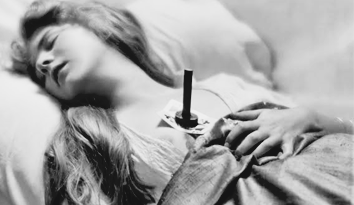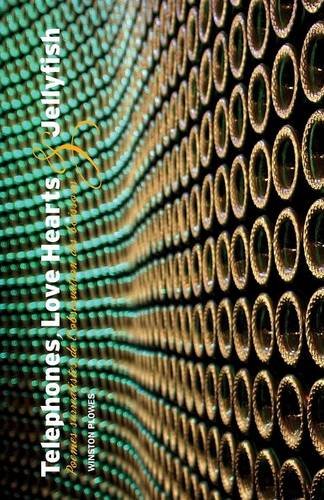Pictures from a Postponed Exhibition by David Walsh & Michael Bartholomew-Biggs
– Reviewed by Ed Ferrari –
It’s worth having a read of Norbert Hirschhorn’s review over on London Grip, for which this book’s author is the editor, before getting on to what I have to say about Pictures from a Postponed Exhibition.
Finished? Right. Good. Hirschhorn’s done most of the heavy lifting for me. Pictures from a Postponed Exhibition is a square-spined words-and-pictures pamphlet published by Belfast Lapwing: words by Michael Bartholomew-Biggs, pictures by David Walsh. Walsh is an Australian expat living in London (not the professional gambler) and the pictures brought on the words, or at least an initial bout, which were then—as I understand from the introduction—supplemented later.
There are fifteen pictures, not sixteen, as Hirschhorn has it (one is a cropped image from a larger canvas). I am art-blind, and will not be able to tell you anything more enlightening than ‘this one got more red than that one,’ so I’ll stick to the language of the poems.
A difficult thing to do, you’d probably think, given that ten of the twenty-nine poems in the book face, and seem to directly describe, Walsh’s pictures. Take ‘Who could know the trees would die’, for instance (Biggs’ titles are his first lines, in bold): it is placed opposite a picture of four dead trees against a black background, growing out of what looks like candyfloss, and it represents two things for me.
Firstly, the ekphrastic poetry I know either slavishly describes the picture, or pinches an idea and runs with it. Drab literalism is what I criticised Mahendra Solanki’s ‘Hammershoi Interiors’ poems for (The Lies We Tell, Shoestring), and it’s just as bad as its flip side, vague abstrationismism; it either rockets away from the picture, rendering it a postage stamp, or sticks too close. And that, in a way, is my complaint about Biggs’ poetry too. It’s an untoothful amalgam of Anglo-Saxon Heaneyism, and the perfumed coddery of poetic poetry; it’s concrete and abstract done badly.
Example: four lines from the middle of the above-mentioned ‘Who could know…’. Oh go on then, here’s the whole thing:
Who could know the trees would die
when we abandoned them?
It must have been the shrivelling
of unaccepted fruit
that concentrated juice to toxins,
sending bitter distillations
of ingratitude to crawl
along their limbs like lizards,
paralysing outstretched arms
and choking invitations
in each would-be giver’s throat.
You want to praise Biggs for this. It’s lyrical. ‘That concentrated juice to toxins, / sending bitter distillations’, that’s pretty sound work, isn’t it? But I cut him off. ‘Sending bitter distillations / of ingratitude to crawl …’, hang on: Say that again? ‘Bitter distillations / of ingratitude to crawl’, oh right. Yes. You did write that. Well it’s all nice, isn’t it? It skips along into the alliterative lizarding lizard line smartly enough. But what does it mean? I don’t know. I don’t know how it ties into the theme of Australian colonialism, either. I can see that there are dead trees in the picture and in the poem. That’s about it.
I’m being unfair, right? But some of these lines are like walking past The Body Shop, or a fourteen-year-old who got their first eau de cologne for Chrimbo: in one poem we get a gust ‘perfumed with suspicions’; some ‘weightless absences’; ‘fragrances’ that ‘ignored our wishes’; the musty ‘paradox of parallax’; and a less than perspicuous ‘beyond abrasive space / hung distant scents of difference.’ The redundancy in this lot bloody reeks.
There’s also more concrete stuff though, and the three poems worth reading in the book: ‘By striking stone like this on stone’, ‘One stone must have been the first’, and—actually, I can’t find a third—but these two, in these two the idea must have been strong enough to avoid being chloroformed by the poet’s poetic poetry.
Get Heaney’s ‘Tinder’ in mind, and you’ll be right on track. These are ‘parables’ of early-man—well, more like home videos: ‘Caveman’s First Fire’; ‘Lucy At 1’ (see Robot Chicken’s ‘A Caveman Takes a Nap’)—and the language is vigorous.
By wrapping breath—soft breath—in straw
we drew a single fibre from those cores
of hurt that writhe in dry brown scrub
and wait to strike and swallow bushes whole.—from ‘By striking stone like this on stone’
Here’s Biggs letting English cut out on its own for once. The Old Englishyness, the robustness of those three verbs, ‘wait’, ‘strike’, and ‘swallow’ are evidence of gumption because they’re so mimetic; you hear it repeated in the last line too, ‘a crack of extra blackness being broken.’ Flagrant Heaneyism? Guilty as charged. It’s dolled up to the nines and totally OTT, but why the hell not?





